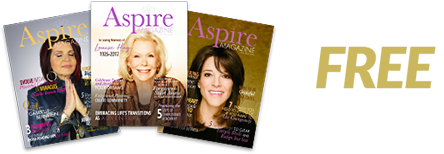
Have you ever felt like you’re showing up for your life on autopilot—checking boxes, answering messages, smiling when you’re supposed to—but inside, you’re running on empty?
You’re not alone.
Emotional burnout is more common (and sneakier) than we realize. It doesn’t always crash into us dramatically; often, it creeps in quietly until one day, we can’t ignore the heaviness anymore.
Let’s explore emotional burnout, the subtle signs we often miss, and simple, powerful ways to start healing—without overhauling your entire life.
Because you deserve more than survival. You deserve to feel alive again.
You know that feeling. The one you keep brushing aside.
It’s not just tiredness. Not just stress.
It’s deeper. Heavier. Hollow.
You’re still showing up, answering emails, smiling when you need to—but inside? You feel like you’re running on fumes. Like a version of yourself, you barely recognize.
That, my friend, is emotional burnout.
It doesn’t always shout. It whispers. Until one day, it roars—and you have no choice but to listen.
Let’s discuss it—not with blame but with curiosity, honesty, and compassion.
Burnout doesn’t mean you’re weak. It means you’ve been strong for too long without enough support.
What Is Emotional Burnout, Really?
It’s not just about too many demands—it’s about being emptied out.
Emotional burnout happens when your inner resources—your patience, energy, and spark—are drained over time. It’s not a dramatic crash; it’s a slow, quiet fade.
Most of us don’t notice at first. We keep pushing, performing, and smiling.
Until one day… we can’t.
Common (and Overlooked) Signs of Emotional Burnout
Burnout doesn’t always come with sirens. Sometimes, it’s subtle and you:
- Feel emotionally flat—not sad, just numb.
- Dread what you once enjoyed.
- Daydream about disappearing for a while.
- Lose hours numbing out on your phone.
- Either snapping at everyone—or withdrawing altogether.
- Even rest doesn’t feel restful anymore.
If any of this hits home, take a deep breath.
You’re not failing—you’re just exhausted. And you’re not alone.
What to Do When You Recognize the Burnout
Recognizing it is powerful.
Healing doesn’t have to mean quitting your life and moving to the mountains (though, no judgment if that’s your dream).
It starts with small shifts. Tiny, brave acts of self-respect.
Here’s how to start:
- Pause Before You Power Through
You’ve been taught to push. To hustle. To “just get through it.” But burnout is your soul waving a flag: We can’t keep living like this. Instead of asking, “How can I keep going?” ask, “What needs to change?” Maybe it’s saying no. Canceling. Delegating.
Perhaps it’s just admitting I’m not okay right now. That admission alone is a powerful beginning.
- Lower the Bar—And Be Proud of It
You don’t need a productivity boot camp or a 30-day comeback plan. Healing happens through softness, not speed. Pick one or two tiny acts of care each day, such as:
- Eat something nourishing.
- Step outside and breathe fresh air.
- Turn off your notifications for an hour.
- Write one messy sentence in a journal.
Small steps are fundamental steps. They rebuild your strength and your spirit.
- Make Space to Feel What’s Real
Stillness can feel terrifying after numbing for so long. But feelings you ignore don’t disappear—they just dig deeper. Feeling them is how you heal them.
You don’t have to solve anything. You just have to feel it without judgment.
Try whispering to yourself:
- “This is heavy, but I can hold it.”
- “It’s okay not to have it all figured out.”
The feeling is not a setback. It’s a sacred return.
- Reconnect to What Sparks You
Burnout cuts you off from joy, meaning, and connection. Healing means inviting them back—even when you don’t feel ready.
Try one, or more, of these:
- Sitting under the sky, even for five minutes.
- Playing music that reminds you who you are.
- Texting someone: “I just need to feel less alone.”
- Doing one small thing you used to love.
You don’t have to wait for motivation. Start small, and let momentum catch up.
- Respect Your Real Limits
You’re not a machine. You’re not meant to be endlessly available.
Ask yourself honestly:
- What’s one thing I can set down?
- What’s one boundary I can honor?
- What’s one truth I can finally say out loud?
You are allowed to rest.
You are allowed to do less.
You are allowed to ask for help.
Burnout Isn’t the End—It’s a New Beginning
Emotional burnout isn’t a failure.
It’s wisdom.
It’s your inner self calling you back.
You don’t need to keep sprinting on empty.
You don’t need to smile through the numbness.
You don’t need to keep pretending you’re fine.
You are allowed to stop.
To rest.
To heal.
And when you rebuild, you won’t just be returning to who you were—you’ll be stepping into someone stronger, softer, wiser, and more alive.\
You were never meant to survive your life.You were meant to feel it. To live it.
And healing doesn’t start someday. It starts now with one brave choice:
“I’m ready to come back to myself.”
If you recognize pieces of yourself in these words, take it as a powerful invitation to come home to yourself—not to push harder.
Burnout isn’t the end of your story.
It begins a new chapter where your needs, rest, and joy matter.
Start small. Stay kind to yourself. Healing isn’t a race—it’s a remembering.
And every tiny, brave step you take brings you closer to the life you’re meant to fully live.



